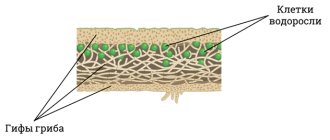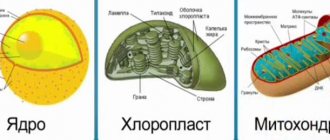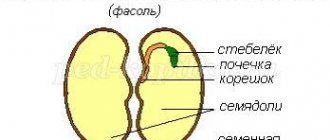Test on the topic "Viruses"
Test on the topic “Viruses” Select one correct answer 1. Viruses were discovered by: a) Winogradsky; b) Pavlov; c) Ivanovsky; d) Vernadsky. 2. The following do not have a cellular structure: a) blue-green algae (cyanes) b) bacteria c) yeast d) virions 3. The virus disrupts the vital activity of the host cell because: a) nucleic acid penetrates the host cell; b) the cell loses its ability to reproduce; c) destroys mitochondria in the host cell; d) The phage DNA synthesizes its own protein molecules. 4. Viruses reproduce: a) only in the host cell; b) independently; c) options a and b; d) are not capable of reproduction. 5. What virus disrupts the human immune system? a) polio; b) smallpox; c) flu; d) HIV. 6. What forms of life occupy an intermediate position between bodies of living and inanimate nature? a) viruses; b) bacteria; c) lichens; d) mushrooms. 7. Viral particles are called: a) vibrios; b) virions; c) embryos; d) gametes. 8. Capsid is: a) the cytoplasm of the virus; b) virus DNA; c) virus shell; d) viral enzymes. 9. Select the FALSE statement about the biological role of viruses. Viruses: a) are producers in nature; b) do not have their own metabolism; c) are one of the important pathogens of humans and animals; d) in nature they play the role of consumers. 10. Viruses are classified as precellular organisms because they: a) do not contain a nucleus; b) are not capable of independent metabolism; c) are parasites; d) do not have organelles. 11. Viruses were discovered in: a) 1828; b) 1865; c) 1892; d) 1900 12. Which of the following human diseases is caused by non-cellular life forms? a) smallpox; b) tuberculosis; c) dysentery; d) cholera. 13. Viruses, penetrating the host cell: a) feed on ribosomes; b) poison it with their waste products; c) reproduce their genetic material; d) settle in mitochondria. 14. The first protective reaction of human and animal cells to infection by a virus is the synthesis of special antiviral proteins that suppress the development of the virus in this cell and make neighboring cells immune to it. These proteins are called a) antigens; b) antibiotics; c) vaccines; d) interferons.
15. Retroviruses are: a) bacteriophages; b) DNA-containing viruses; c) RNA – containing viruses; d) DNA and RNA viruses. 16. Establish a correspondence between the feature of an object and the form of life for which it is characteristic. SIGN OF AN OBJECT FORM OF LIFE A) presence of ribosomes B) absence of a plasma membrane 1) non-cellular (viruses) C) do not have their own metabolism D) most heterotrophs 2) cellular (bacteria) E) reproduction only in host cells E) reproduction by cell division 17. Establish the sequence of the bacteriophage life cycle. A. Incorporation of bacteriophage DNA into the host cell. B. Synthesis of viral DNA and proteins in the bacteriophage cell. B. Attachment of the bacteriophage to the bacterial membrane. D. Penetration of bacteriophage DNA into the bacterial cell. D. Exit of the bacteriophage from the cell, infecting others. E. Self-assembly of viruses. 18. Establish the sequence of the life cycle of an RNA-containing virus in the host cell: 1) dissolution of the cell membrane at the site of attachment of the virus; 2) integration of viral DNA into the DNA of the host cell; 3) synthesis of viral DNA; 4) formation of new viruses; 5) attachment of the virus with its processes to the cell membrane; 6) penetration of viral RNA into the cell; 7) reverse transcription; synthesis of viral proteins. Choose two correct answers
b) DNA-containing viruses; c) RNA – containing viruses; d) DNA and RNA viruses. 16. Establish a correspondence between the feature of an object and the form of life for which it is characteristic. SIGN OF AN OBJECT FORM OF LIFE A) presence of ribosomes B) absence of a plasma membrane 1) non-cellular (viruses) C) do not have their own metabolism D) most heterotrophs 2) cellular (bacteria) E) reproduction only in host cells E) reproduction by cell division 17. Establish the sequence of the bacteriophage life cycle. A. Incorporation of bacteriophage DNA into the host cell. B. Synthesis of viral DNA and proteins in the bacteriophage cell. B. Attachment of the bacteriophage to the bacterial membrane. D. Penetration of bacteriophage DNA into the bacterial cell. D. Exit of the bacteriophage from the cell, infecting others. E. Self-assembly of viruses. 18. Establish the sequence of the life cycle of an RNA-containing virus in the host cell: 1) dissolution of the cell membrane at the site of attachment of the virus; 2) integration of viral DNA into the DNA of the host cell; 3) synthesis of viral DNA; 4) formation of new viruses; 5) attachment of the virus with its processes to the cell membrane; 6) penetration of viral RNA into the cell; 7) reverse transcription; synthesis of viral proteins. Choose two correct answers
19. Viruses are: a) precellular forms of life; b) the oldest of eukaryotes; c) primitive bacteria; d) occupy an intermediate position between living and inanimate nature; e) contain some non-membranous organelles. 20. The essential components of the virus are: a) lipids; b) nucleic acids; c) proteins; d) polysaccharides; d) ATP. 21. Signs of organisms characteristic of a non-cellular form of life: a) nutrition; b) release of harmful waste products; c) breathing; d) high degree of change in adaptability to the environment; d) heredity. 22. The following diseases are not viral: a) foot and mouth disease; b) syphilis; c) rubella; d) rabies; d) typhus. 23. The main difference in the structure of the smallpox virus from the diphtheria bacillus is the absence of the virus: a) proteins; b) DNA; c) genes; d) ribosomes; e) cytoplasm.
ANSWERS to the test “Viruses” 1 2 3 4 5 6 7 8 9 10 11 12 13 14 15 c d b a g b c a b c a c d c 16. 211212 17. VGABED 18. 51673284 19. ag 20. bv 21. gd 22. bd 23. gd
Biology lesson 10th grade “Viruses are non-cellular life forms”
Biology lesson
in 10th grade
“VIRUSES – NON-CELLULAR LIFE FORMS”
Target:
to form in students knowledge about non-cellular forms of life - viruses - based on solving a problem situation.
Tasks:
- Educational:
reveal the features of intracellular parasitism of viruses; characterize the structural features and activity of viruses; describe the mechanism of virus penetration into cells; consider the characteristics of virus reproduction; report dangerous viral infections and disease prevention;
- Educational:
continue to develop skills in working with textbooks and scientific literature;
- Educational:
to form an understanding of the value of human life.
Lesson type:
learning new material.
Lesson format:
combined lesson using presentation.
Form of organization of educational activities:
frontal.
Teaching methods:
explanatory and illustrative, problem presentation, partly exploratory.
Duration:
45 minutes.
Equipment:
tables
“
Structure of viruses”, “Bacteriophages”, popular scientific literature about viruses, multimedia presentation, computer, projector, screen.
Viruses are bad news in a protein package.
P.Medawar
DURING THE CLASSES
I. _ ORGANIZING TIME
Hello guys, sit down. The basis of every lesson is work. Gaining knowledge and learning to apply it is a lot of work. So set yourself up to learn a lot of new and interesting things from today’s lesson.
II . KNOWLEDGE UPDATED
Teacher.
We all, unfortunately, already understand that a terrible disease called AIDS has firmly entered the 21st century with us. More and more people around the world are dying from this terrible disease. Let's look at the data on its distribution.
The unknown disease was first reported by Morbidity Weekly (USA) in 1981. By the end of the year, 166 cases of this disease were mentioned. Four years later, the first World AIDS Conference took place in Atlanta, where there was “clear and undeniable shock.” This terrible disease has claimed and continues to claim millions of lives. This year there are hundreds of famous names such as Rudolf Nureyev, Freddie Mercury...
AIDS develops slowly. For several years, the only sign of the disease may be enlargement of some lymph nodes. Then the temperature rises, prolonged stomach upsets, sweating, and weight loss begin. In the future, pneumonia, skin damage, blood poisoning, and malignant tumors occur. All this leads to the death of a person. The most offensive thing is that most often young people in full bloom die.
- What organisms cause AIDS? (Students must answer the problem question at the end of the lesson.)
Let us recall the material on the topic “Cell”.
- What is a cell? All living organisms have a cellular structure.
- What two groups are cellular organisms divided into?
- What does "prokaryotes" mean?
- What organisms are prokaryotes?
- What does "eukaryote" mean?
- What organisms are prokaryotes?
But there are organisms that do not have a cellular structure. We will learn what kind of organisms these are in class.
The topic of the lesson is “Viruses - non-cellular forms of life.” Today in the lesson we will introduce you to unique organisms - viruses, which are non-cellular life forms. Let's consider the characteristics of viruses, the structure of these organisms, and the stages of life. We will reveal the features of intracellular parasitism of viruses, study the mechanism of penetration of viruses into cells, and you will also learn about dangerous viral infections and disease prevention. (Slide show)
Lesson Plan
(Slide Show)
- Discovery of viruses.
- The structure and activity of viruses.
- Variety of viruses.
- The mechanism of virus penetration into the cell.
- Viral infections and disease prevention.
III . LEARNING NEW MATERIAL
Message from student 1
In 1892, Russian scientist, botanist Dmitry Iosifovich Ivanovsky (slide demonstration)
drew attention to a widespread disease of the tobacco plant, in which the leaves become covered with a scattering of spots (mosaic disease)
.
He squeezed the juice out of these leaves and filtered it through a porous filter made of baked clay. The holes in the filter were so small that they even trapped bacteria. However, the filtered juice has not lost its infectious properties.
DI. Ivanovsky called open organisms “filterable viruses” and identified two main properties of viruses: they are very small and, unlike cells, they cannot be grown on artificial nutrient media.
7 years later (in 1899) microbiologist M. Beijerinck (slide demonstration)
introduced the term “virus” into scientific use. Translated from Latin, “virus” means poison. Viruses poison living organisms and are intracellular parasites.
A few years later F. Leffler and P. Frosch (slide demonstration)
discovered that a disease found in domestic animals, foot and mouth disease, is caused by a pathogen that also passes through a bacterial filter, that is, it is a virus.
In 1917, Canadian bacteriologist Felix de Hérelle (slide demonstration)
discovered a bacteriophage, a virus that infects bacteria.
Teacher.
- So, viruses infect all living organisms - bacteria, fungi, plants, animals.
Let's look at the structure of viruses.
− Read the article “Chemical composition of viruses” in the textbook.
− Complete the task on card No. 1.
(Students' answers)
Teacher's summary.
The virus consists of two parts: a core, which contains nucleic acid, and a capsid, consisting of protein
(slide demonstration).
From Latin
capsa
- container, box, case. The capsid protects the genetic material of the virus from the action of enzymes (nucleases) that destroy nucleic acids and from exposure to ultraviolet radiation. The capsid also ensures that the virus attaches to the surface of the cell membrane.
Viruses are divided into simple and complex (slide demonstration).
Simple viruses contain nucleic acid and a capsid; complex viruses also contain an additional shell, protein or lipoprotein, called a supercapsid.
Based on their genetic material, viruses are divided into RNA-containing and DNA-containing (slide demonstration).
Currently, more than 1000 different types of viruses have been described (slide demonstration)
. They are classified into a special kingdom of living nature - Viruses (non-cellular life forms). The science that studies viruses is called virology.
Viruses are 50 times smaller than bacteria, so they pass through the filter freely. Their sizes are 20-300 nm. Viruses were only seen using an electron microscope in the 30s of the 20th century.
Viruses are a special and unique form of life, albeit a very primitive one.
Viruses have the basic characteristics of living organisms: variability, heredity. On the other hand, viruses do not have such essential signs of life as metabolism and are not capable of independent reproduction outside the host cell.
The mechanism of virus penetration into cells
Teacher.
The main route of virus penetration into the host cell is receptor endocytosis
(slide demonstration)
. Viruses enter the cell along with droplets of intercellular fluid. The process of virus penetration into a host cell includes several stages:
- Attachment of the virus to cellular receptors, penetration of the nucleic acid with the capsid in a droplet of liquid into the cell.
- After the virus enters the cell, the capsid is destroyed, releasing the RNA.
- Viral DNA is synthesized from a viral RNA molecule.
- The synthesized viral DNA penetrates the host cell nucleus and is integrated into its genome.
- Viral mRNA is synthesized from DNA.
- Do you remember what this process is called? What is transcription?
- The mRNA enters the cytoplasm, where viral proteins are synthesized.
- What is this process called? What is broadcast?
- To reproduce, viruses use the energy and enzyme systems of the host cell, since they do not have their own. The nucleic acid of viruses rearranges the functioning of the cell’s synthetic apparatus, forcing it to work for itself.
A different route of entry into the cell is characteristic of bacterial viruses – bacteriophages.
To find out about this:
− Read the text of the textbook.
− Complete the task on card No. 2.
(Students' answers)
- So, there are two ways for viruses to enter a cell.
Viruses are constant companions of humans from the moment of birth until old age. It is believed that with an average life expectancy of 70 years, a person suffers from viral diseases for about 7 years. It is estimated that the average person experiences two or more viral infections every year, and that viruses enter the body up to 200 times over a lifetime. We will get acquainted with viral infections and disease prevention by listening to the following message.
Student 2's message
Viruses, as causative agents of diseases in humans, animals, plants and microorganisms, have been known since ancient times. A papyrus has been found describing smallpox that raged in Ancient Egypt around 4000 BC (slide show)
. In the history of our country, widespread smallpox epidemics have occurred more than once. In the 13th century in Moscow, smallpox destroyed almost 80% of the population. In the Middle Ages, in Europe alone, 10 million people fell ill with smallpox every year and up to 2 million people died. The eradication of smallpox was announced only in 1980 at the Assembly of the World Health Organization.
Viral diseases are still widespread today. Measles is a common childhood disease. Around the world, about 2 million children die from measles every year. In countries with hot climates, the most common cause of death in children in the first year of life is viral gastrointestinal diseases.
The nature of epidemics that repeat from year to year is a viral disease such as influenza (slide demonstration)
.
Herpes disease is also viral in nature. They say: “a fever broke out on the lips” (slide demonstration).
Viruses cause hepatitis, rubella, mumps, polio, tick-borne encephalitis, etc. in humans.
Viruses not only cause infectious diseases, but can also cause benign and malignant tumors, as well as blood diseases (leukemia).
Viral diseases occur not only in humans, but also in animals and plants. These are foot and mouth disease and leukemia in cattle, erysipelas in pigs, plague in birds and pigs, etc. In plants, viral infection causes tumor growths, growth retardation, wrinkling and dwarfism of shoots and leaves, discoloration of flowers (slide demonstration)
.
Message from student 3
AIDS – acquired immunodeficiency syndrome (slide demonstration)
. With this disease, a person loses that part of the body’s immune system that is associated with T-lymphocytes in the blood, which provide cellular and humoral immunity.
As a result, a person becomes practically defenseless against a variety of microorganisms. The disease begins gradually and unnoticeably. It is characterized by general weakness, malaise, decreased performance, exhaustion of the body, as well as various manifestations of an inflammatory nature.
The causative agent is a virus called HIV (human immunodeficiency virus) (slide demonstration)
. The HIV virus belongs to the group of retroviruses. This is an RNA virus. The endemic focus of this disease is in America. Previously, a virus with similar properties was found in the body of green monkeys. In a way that has not yet been proven, it entered the human body, where it began to multiply and be transmitted from person to person. Initially, the virus came from African countries to Haiti and then to the United States.
HIV is introduced into the body through blood mainly through sexual contact with sick people, as well as through intravenous drug administration and violation of sanitary standards during blood transfusions.
Currently, there is a massive increase in the number of HIV-infected people on the planet. The problem of combating the AIDS virus remains one of the main ones for society, for healthcare and the science of virology.
IV . CONSTRUCTION OF LEARNED MATERIAL
- Question for students
(put at the beginning of the lesson)
- What organisms cause AIDS?
- Problematic question
- So, viruses - non-cellular life forms - cause various diseases. It is necessary to protect your body from viruses. As P. Medawar said, “Viruses are bad news in a protein package.” Do you agree with this statement? Give reasons for your answer.
- Test "Viruses"
(Slide demonstration)
- Viruses were discovered in 1892:
a) D.I. Ivanovsky;
b) I.M. Sechenov;
c) I.P. Pavlov.
- The term "virus" (from Latin "poison") was introduced:
a) M. Beyerinck;
b) I.M. Sechenov;
c) I.P. Pavlov.
- The bacteriophage consists of the following parts:
a) nucleic acid and capsid;
b) nucleic acid and supercapsid;
c) nucleic acid, capsid and supercapsid.
- The bacteriophage contains nucleic acid:
a) in the head;
b) in the tail;
c) in thorns.
- The size of viruses varies:
a) from 20 to 300 nm;
b) from 20 to 30 nm;
c) from 200 to 400 nm.
- Viruses do not have:
a) metabolism;
b) heredity;
c) variability.
- The main route of entry of the virus into the cell:
a) endocytosis;
b) exocytosis;
c) pinocytosis.
- The virus causes the disease:
a) smallpox;
b) cholera;
c) tuberculosis.
- What virus causes AIDS?
a) immunodeficiency;
b) herpes;
c) smallpox.
- “Viruses are bad news in a protein package.” This statement:
a) P. Medawar;
b) M. Beyerinck;
c) I.M. Sechenov.
- Questions for students (conversation)
(Slide demonstration)
- What forms of life exist on Earth?
- What organisms are non-cellular life forms?
- Name the signs of a living organism that are characteristic of viruses.
- What important property of living organisms is not characteristic of viruses?
- What two groups are viruses divided into based on their structure?
- What is the structure of a simple virus?
- How does a complex virus differ from a simple one?
- How are viruses different from bacteria?
- Name two ways viruses enter a cell.
- What does the virus use to synthesize its proteins?
- What diseases are caused by viruses?
- Name measures to prevent AIDS.
V. _ SUMMARY OF THE LESSON
Assessment of student activity in the lesson.
VI . HOMEWORK
Using notes, a paragraph from a textbook on this topic, study the structure, reproduction of viruses, and their practical significance.
Thank you all for your work. Goodbye.
Literature:
- Agol V.I. “Tricks of viruses.” Biology at school - M.: Shkola-Press, 2003, No. 7.
- Aleksin A.G. etc. What is it? Who it? – M.: Education, 1985.
- Gallo, Robert C. Acquired immune deficiency syndrome virus. // In the world of science - No. 3, 1987.
- Zvereva I.V. Biology. Grade 10. – Volgograd: Corypheus, 2008.
- Kamensky A.A. Kriksunov E.A. Pasechnik V.V. Biology. Introduction to general biology and ecology, M., Bustard, 2005.
- Kulev A.V. General biology. 11th grade: Methodological manual - St. Petersburg: Parity, 2001.
- Biology textbook for 11th grade students of general education institutions./ Edited by prof. I.N. Ponomareva. - M.: Ventana-Graf, 2005.
- Biology textbook for grades 10-11 in general education institutions. V.B. Zakharov, S.G. Mamontova, I.N. Sonin, stereotype. - M.: Bustard, 2002.
- Textbook for educational institutions / A.A. Kamensky, E.A. Krikunov, V.V. Beekeeper. General biology grades 10-11. - M.: Bustard, 2005.
- Fasevich I.N. Biology. 6 – 11 grades. Lesson notes: seminars, conferences, formation of key competencies, - Volgogdad, Teacher, 2009.
- Haseltine, William A., Wong-Staal, Flossie. Molecular biology of the AIDS virus. // In the world of science - No. 12, 1988.




